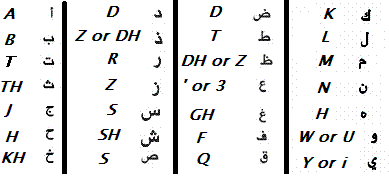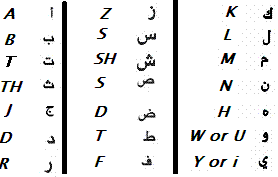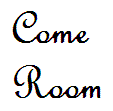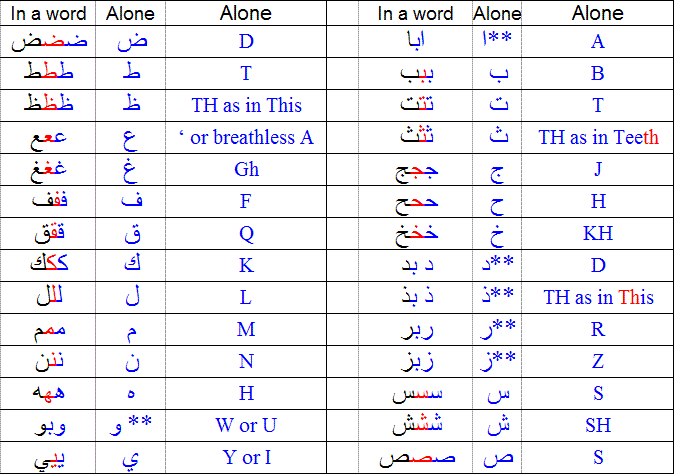Arabic Alphabet
The Arabic alphabet
is written and read from right to left and horizontally. There are 28
letters in the Arabic alphabet, first let�s watch the video below:
Now examine
the table below

As you may
have noticed, some of the letters in Arabic don�t exist in English and vice
versa. We will first go through the letters that exist in English, the table
below shows the letters that you may not have any problem learning or
pronouncing:

Now we will
go through the Arabic
letters that are
either hard to pronounce or are pronounced a little bit differently, you
shouldn�t worry if you can�t pronounce them the right way, because there are
always close pronunciations in Arabic, and you still can be understood.

Reading
Arabic:
Now that
you know how to pronounce the Arabic letters, we will go through reading
them, Arabic letters should be written connected to each other, you can
simply think of it as if you�re writing in cursive in English, like in the
example below you can see how the first WELCOME is written, then the second
WELCOME which has all letters connected to each other, Unlike English,
Arabic in most cases cannot be written with its letters separated from each
other like the way we wrote the word WELCOME. Most letters should be
connected like the way the second
Welcome
is
written. There are some exceptions which we will go through in this lesson.

To read
Arabic you should know that the Arabic alphabet letters have up to 3 forms,
each letter takes a form depending on its position in the word, look at the
example below and you will notice that a letter has a form at the beginning
of the word, in the middle of the word and at the end of the word, some
letters however can keep the same form in one or two positions. Compare the
m in the two examples below, the M of come has a longer tail
than the M of the room because of the position of m, the same thing
happens in Arabic. The form that a letter takes depends on its position in a
given word, and the difference most of the time is very small, like a longer
tail to allow it connect with another letter following it.

The table
below shows the three forms that a letter can take, a letter in a blue font
shows a letter starting a word, the red font shows a letter in the middle of
the word, and the black font shows a letter at the end of the word, as you
may have noticed, there is no big different between the three forms.
Just a tip
for you: most of the time the letter at the end looks exactly like
the letter when it�s alone.
Arabic
Alphabet List:

**: letters
having stars next to them can only connect with other letters placed before
them and not after, which means that if a letter is placed after them, that
letter should take a form as if it was placed in the beginning of the word.
Note also
that the letters I marked with stars in the table above never connect with
other letters marked with stars either before or after.
So you have
to be careful with these starred letters, because sometimes they may make
you think that they�re the last letter of a word because they have that form
of an ending letter, while in the reality they may not be the last letter of
the word. The table below may explain it better:

Learning
how to read Arabic characters and how to pronounce it will make it very easy
for you to learn the language, and avoid counting on transliterations that
are not really reliable.